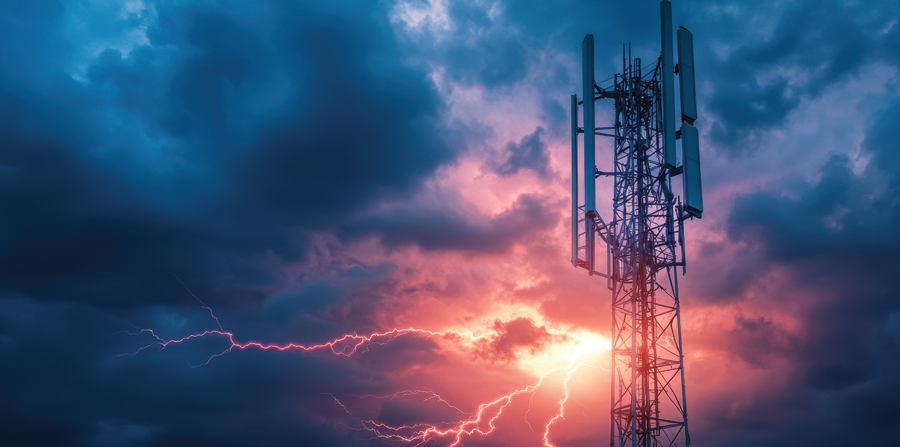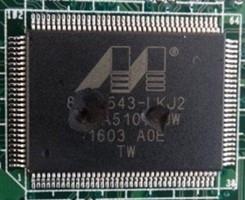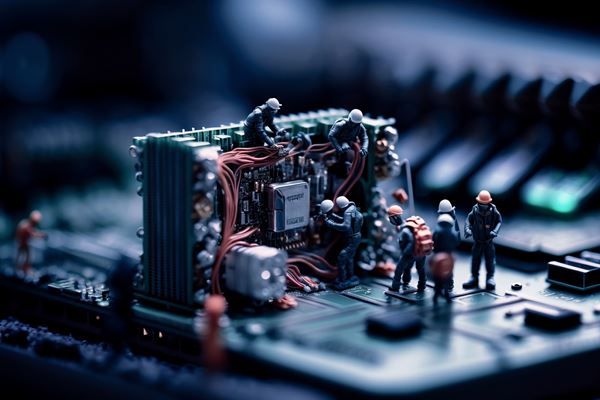IT Equipment Common Perils: Lightning

Lightning Strikes and IT Equipment
Lightning requires a point of entry into equipment and follows an electrical path to damage equipment. When it comes to computer equipment, lightning damages it via two different methods: direct strike and inductive coupling.
Direct Strike
In simple terms, a direct strike is where lightning directly hits something, while inductive coupling is where lightning strikes near something and the energy is carried by nearby conductors. In a more detailed description, a direct strike is when lightning directly hits a power line, building, or object. This impact can cause significant damage to the structure as well as the electrical equipment connected to it. Direct strikes often have visible damage such as burning, charring or damage to trees, chimneys, fences, or other items in the area.
Inductive Coupling
Inductive coupling is more complex and occurs when lightning strikes near long conductors, such as networking cables, telephone lines, or serial communications lines. The lightning strike generates strong electromagnetic waves, which are collected by conductors with enough surface area. Think of it as throwing a pebble in a pond that makes ripples.
This causes an overvoltage to be induced in the conductors, which travels to both ends of the conductor. The magnitude of the voltage depends on the distance between the lightning strike and the conductor, the length of the conductor, and the orientation of both. Generally, inductive coupling is only a factor when the conductor is over 30 feet long and is within 1½ miles of the lightning strike.
There is generally no visual indication of inductive coupling, but the damage pattern and the presence of lightning noted in weather reports, STRIKEnet or user accounts help confirm that inductive coupling is the cause.
Inductive Coupling Damage to an Integrated Circuit of an Ethernet Switch
Inductive coupling induces a low voltage. Electric power distribution lines operate at hundreds or thousands of volts. Therefore, the low voltage generated by the lightning will produce no appreciable effect on the power supply and will generally not result in damage to electrical components utilized for power distribution.
However, low-voltage communication conductors, such as telephone lines, serial communication lines, and computer networking cables, usually transmit at only a few volts. A lightning-induced voltage can thus cause damage to communications interface cards in computers and line or station cards in telephone systems.
Inductive coupling can also damage Ethernet ports to the point that they are slow but still function. If the port is slow, users may complain that the internet is not responding quickly, or it is taking longer to download or open documents on the network.
Inductive coupling can even cause an Ethernet port to no longer operate. If a port will not send or receive information, this can be a sign that the port is dead and is no longer functional. Unfortunately, those with some technical acumen can disable an Ethernet port on a computer, server, or on an Ethernet switch via the software, referred to as “administratively down.” This is an attempt to mimic dead ports to provide evidence of lightning. Knowing the difference between lightning and misleading evidence often requires a causation expert.
Case Study: Lightning Strikes Cinema Through Inductive Coupling
One example of inductive coupling involved lightning strikes near a movie cinema with six theatres at the rear of the building. Four theatres had no issues, but the two near the back of the cinema were having delays in sending movies. Before the lightning event, it took two minutes to transfer the typical move, but after the event, it took approximately twenty minutes.
In testing with a packet reader, the ports on the movie server Ethernet port revealed that the speed was transmitting at 10/100 instead of the expected 1000 Megabit (MB) transfer speed. The port on the Ethernet switch also had the same speed despite being rated for GB transfer speeds. This shows the results of the nearby lightning, as it did not damage the cable, but did impact the higher-end functions of the Ethernet ports on the theatre server and Ethernet switch.
Power Loss Due to Lightning
Lightning can also cause an abrupt loss of power to a building or area by damaging power lines or electrical infrastructure. Power loss is the absence of power and not a power surge. While lightning could cause power loss, issues resulting from the power loss are not generally physical damage.
Connect With Expert Power Surge & Lightning Damage Consultants
Understanding the complex ways lightning can damage electronic and electrical systems (whether through direct strikes or inductive coupling) is important for accurate diagnosis and effective mitigation. As we've seen, damage may not always be visible, making expert analysis essential to determine the true cause and prevent future vulnerabilities.
If your organization faces challenges related to lightning-related damages or needs specialized expertise to assess and resolve complex cases, connect with Envista Forensics today. Our team of experienced forensic professionals is ready to provide comprehensive investigations, precise cause analysis, and tailored solutions to safeguard your critical infrastructure.
Nuestros consultores están listos para ayudar.



